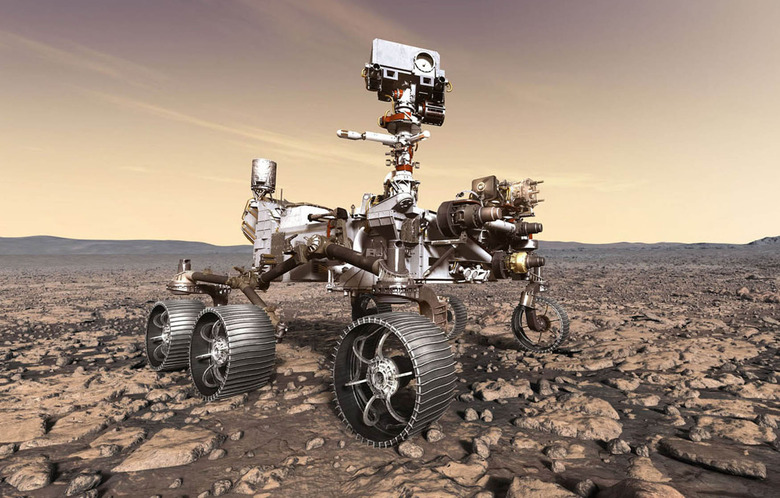NASA's New Rover Shot Lasers At A Mars Rock And Recorded The Audio
Pew pew pew! Space and lasers go together like peanut butter and jelly, at least when it comes to science fiction. Surprisingly, the reality isn't all that far off. Sure, they don't really make "pew" noises, and, no, you can't see a laser beam flying through space like in Star Wars, but still, scientists have used lasers for various things in space for a while now. NASA's Perseverance rover is the latest high-tech piece of machinery to use lasers outside of Earth, and NASA even managed to record what it sounds like.
In a new post by NASA's Jet Propulsion Laboratory, the group reveals that the Perseverance rover has fired up its "SuperCam" instrument to begin some early work. The rover sent back a trio of audio files — one of which we heard yesterday and included the soothing sounds of the wind across the surface of the planet. Now we get to hear what it sounds like to fire a laser on Mars as well.
The SuperCam is the instrument-packed "head" of the rover. It's packed with tools that the robot will use to study the surface of the planet and various features its finds, like rocks. In its first real test, it fired its laser at a rock that was sitting roughly 10 feet away. Here's audio of the zaps being shot by the rover:
Those ticking sounds you hear are the individual laser discharges. "Some zaps sound slightly louder than others, providing information on the physical structure of the targets, such as its relative hardness," JPL explains.
The lasers — there are actually two separate laser systems built into the SuperCam — will be used to study the nature of the rocks that Perseverance comes across. In combination with the four spectrometers that are built into the cam, the rover will be able to return valuable data about the objects that litter the surface of the Red Planet. They may even be able to paint a picture of what the planet was like in its distant past, including whether or not it could have supported life and, even more importantly, whether life was present at some point in its past.
"It is amazing to see SuperCam working so well on Mars," Roger Wiens, principal investigator for Perseverance's SuperCam, said in a statement. "When we first dreamed up this instrument eight years ago, we worried that we were being way too ambitious. Now it is up there working like a charm."
It definitely seems to be working well, and with NASA's reputation for building long-lasting robots, it sounds like we're in for years of exciting discoveries. Perseverance has only traveled a couple of dozen feet so far, but science efforts are expected to ramp up in the coming weeks and months, so it won't be long before we have some new findings to drool over.
